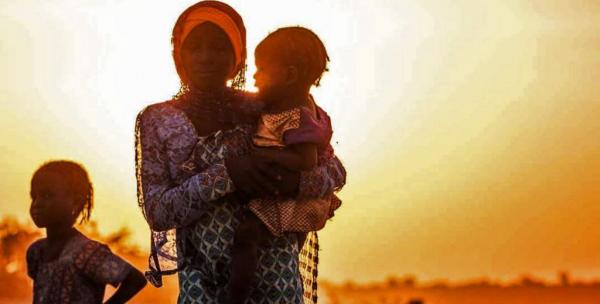
April 13 (UPI) — African terrorist network Boko Haram appears to be growing its strategy of recruiting children to carry out suicide attacks, an international humanitarian watchdog said this week — a prospect that’s drawn near universal condemnation from governments and advocates around the globe.
According to a report by the United Nations International Children’s Emergency Fund (UNICEF), the Nigeria-based militant group enlisted more than two dozen children to mount tactical suicide bombings in various African countries in the first three months of this year — nearly matching the entire total for 2016.
Twenty-seven children were strapped with explosives and sent by the group into populated communities in January, February and March, UNICEF said in an analysis released Wednesday. The group used only 30 children for suicide attacks in all of last year, the U.N. agency said — appearing to mark a substantial paradigm shift within the insurgency.
Boko Haram has used more than 100 children for the purposes of blowing themselves up in an attack since 2014, UNICEF’s report said. Eighty percent were young girls — a fact that adds to Islamic militants’ misogynistic reputation.
The UNICEF report, titled Silent Shame: Bringing out the voices of children caught in the Lake Chad crisis, underscores an increasingly familiar pattern of terrorist organizations using young children to save adult operatives from having to give their own lives to advance their jihadist agenda. The analysis calls ongoing child recruiting in Africa’s Lake Chad region — an endorheic drainage basin centered on Lake Chad that spans seven countries — a “major humanitarian crisis.”
“First and foremost, these children are victims of the conflict,” the 23-page report states. “Boko Haram, in particular, has been leading a systematic campaign of abduction that has forced thousands of girls and boys into their ranks.”
The report cites an indisputable rise of child terrorism. Only four children were used in suicide attacks in 2014 — a figure that rose to 56 in 2015 and 30 in 2016. The tally by the end of 2017 will likely be twice as high.
“This is the worst possible use of children in conflict,” UNICEF Regional Director for West and Central Africa Marie-Pierre Poirier said in a statement. “Forcing or deceiving them into committing such horrific acts is reprehensible.”
Established in 2002, Boko Haram maintains a strong presence in northern Africa — particularly Nigeria, Niger, Chad and Cameroon — and has carried out a number of militant operations in recent years. More than 2 million people — 1.3 million of them children — have so far been displaced in those four countries by the group’s activities. Nearly 900 were released last year.
The group was a relatively unknown terrorist faction until three years ago, when it abducted nearly 300 schoolgirls from their homes during a nighttime raid in Chibok, Nigeria — an act that swiftly drew universal condemnation from the international community and sparked a hash campaign online, #BringBackOurGirls. Some have since been freed, but most remain unaccounted for.
“The Boko Haram insurgency was fueled in large part through systematic abduction of children,” the report continues. “The Chibok abduction remains one of the most well known examples, but the practice is widespread; it preceded Chibok and continues to this day.”
The boys and some girls are abducted for militant training, UNICEF says, while other young females are taken to serve more of a supportive, recreational role for jihadist fighters.
“[Girls] are assigned ‘husbands’ who rape them in a marriage without ceremony. They face periods of isolation while the husbands are away — and periods of repeated rape when they return,” the report says. “Many girls, some as young as 13, became pregnant in captivity and gave birth without any medical care or even kindness from their fellow inmates. Frequent beatings are commonplace and the girls describe living with constant armed guards, even when going to the toilet.”
“We were beaten and then told to go to rooms to be married to our husbands,” victim Aisha, who was kidnapped by Boko Haram at age 13 and gave birth to a baby during three years of captivity, said. “A man entered the room. There was no ceremony. He raped me and made me his wife. He was very violent to me.”
“Even after sex, my husband never talked to me,” she continued. “He would just go to prayers.”
“In some cases, parents are killed in front of the girls during the process,” the report says. “This is typically followed by an extended journey to a Boko Haram base in the forest where the girls are forced into early marriage and sexual slavery. For boys, the stories are equally harrowing, with fewer reports of sexual abuse.
“Some reports also indicate that children are forced to become abductors themselves and given weapons or whips to round up children and pry them from their mother’s arms.”
UNICEF’s report also acknowledges the long-term psychological impact the abductions have on children who survive and escape.
“I was so afraid that they would kill me. I just wanted to survive,” Bukar, kidnapped by Boko Haram when he was also 13, said of his experience. “All the children were terrified. … Some of the younger ones would cry at night. When I heard them it would make me cry, too.”
Bukar, tasked with driving armed fighters into battle on a motorcycle, escaped one day by driving off while the militants were engaged in a gun battle.
“When I drove off they were shouting and shooting at me,” he recalls. “I thought I was going to die. … I have nightmares all the time.”
“It is unclear whether some of these children are even aware of what they are being asked to do,” the report states. “The upward trend of using children as a means to avoid detection is a defining feature of this conflict. … The result is that girls, boys and even infants are being viewed with increasing paranoia at checkpoints, where they are thought to be carriers of explosives.”
UNICEF said in the report that its mission to rehabilitate child survivors is hindered by limited funding. It received just 40 percent of the $154 million in international funding it asked for last year.
The report also submits three chief recommendations — removing terror-affiliated children from ‘closed administrative custody,’ moving children from a military to a civilian environment as quickly as possible, and providing care and protection for separated and unaccompanied children.
‘The complexities of delivering healthcare, education, and sanitation and protection services to millions of people spread across four countries with an active and deadly conflict represent one of the world’s most complex humanitarian challenges,” the agency said.
“On the ground, meeting the children of this crisis, the stories become even more daunting as each child has a similar story of attack, flight, loss and struggle. The courage and resilience of these children provides a glimpse of hope amid the grim reality of this crisis.”






